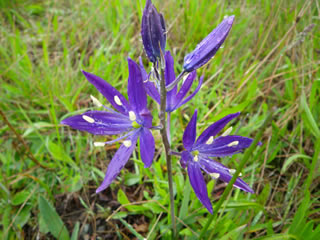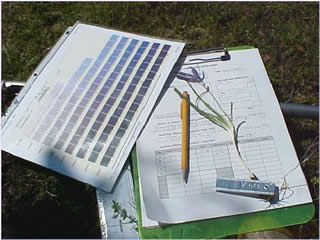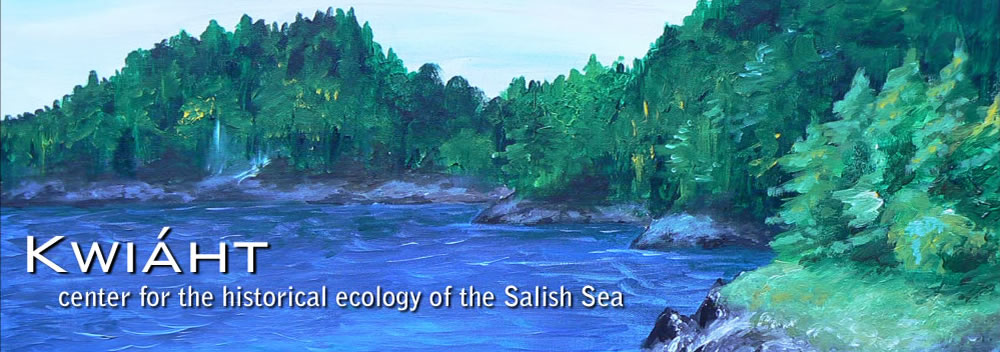Ancient Gardens and Camas

Camassia leichtlinii
Ancient gardens can be found in some parts of the islands where Coast Salish peoples cultivated great camas (Camassia leichtlinii), Indian carrot (Perideridia gairdnerii), Columbia lily (Lillium columbiana), and other geophytes. Early explorers and settlers described women and children weeding and digging camas with digging sticks in small rock-walled family gardens. Andean potatoes were also well established in Coast Salish gardens before the 1820s, probably obtained through trade links with Native peoples in New Spain before the first European ships actually visited the Salish Sea. The Vancouver Island settler W.C. Grant wrote in 1857 that potatoes had surpassed camas in popularity with Coast Salish cultivators.

Kwiaht has been using soil profiles to identify and map ancient garden sites throughout the islands. Consistently burning off shrubs and grasses, hoeing and digging produces a very dark, deep, homogeneous (non-stratified) soil in which the dominant organic matter is fine granular charcoal rather than decomposing plant material. Food remains such as marine shells are absent, or restricted to small corners of sites. Gardens appear to have been less than an eighth of an acre (5,000 square feet or 600 square meters).

Fire experiment in a Lopez meadow
Through field experiments, Kwiaht scientists have concluded that small, flashy autumn fires suppress the growth of native annual grasses and shrubs in gardens without affecting buried camas bulbs. Fires do not suppress invasive Eurasian grasses, however, even after adding woody fuel that raises temperatures to levels that threaten buried bulbs and nearby trees. Invasive grasses associated with the introduction of sheep in the mid-19th Century have effectively altered the ecology of fire irreversibly in the islands.

Chocolate lily Iceberg Point meadow
Kwiaht has been building a living collection of traditional food plants collected from more than thirty different islands, and studying camas genotypes for clues to the origins and antiquity of camas domestication. With financial support from the Washington State Department of Agriculture, Kwiaht has worked with local farmers, Lopez Elementary School, and the Swinomish Tribal Community to revive camas cultivation and the use of camas as a nutritious food that is better adapted to the winter downpours and summer drought that are typical of the islands.
Download the first edition of our camas cookbook Sweet Camas (additional recipes in the Camas Cookbook Appendix)
Article: Ancient agriculture (Islands Weekly, 2008)
Research Paper: The Importance of Human Intervention in the Evolution of Puget Sound Ecosystems
Pamphlet: Growing_Food_Camas
